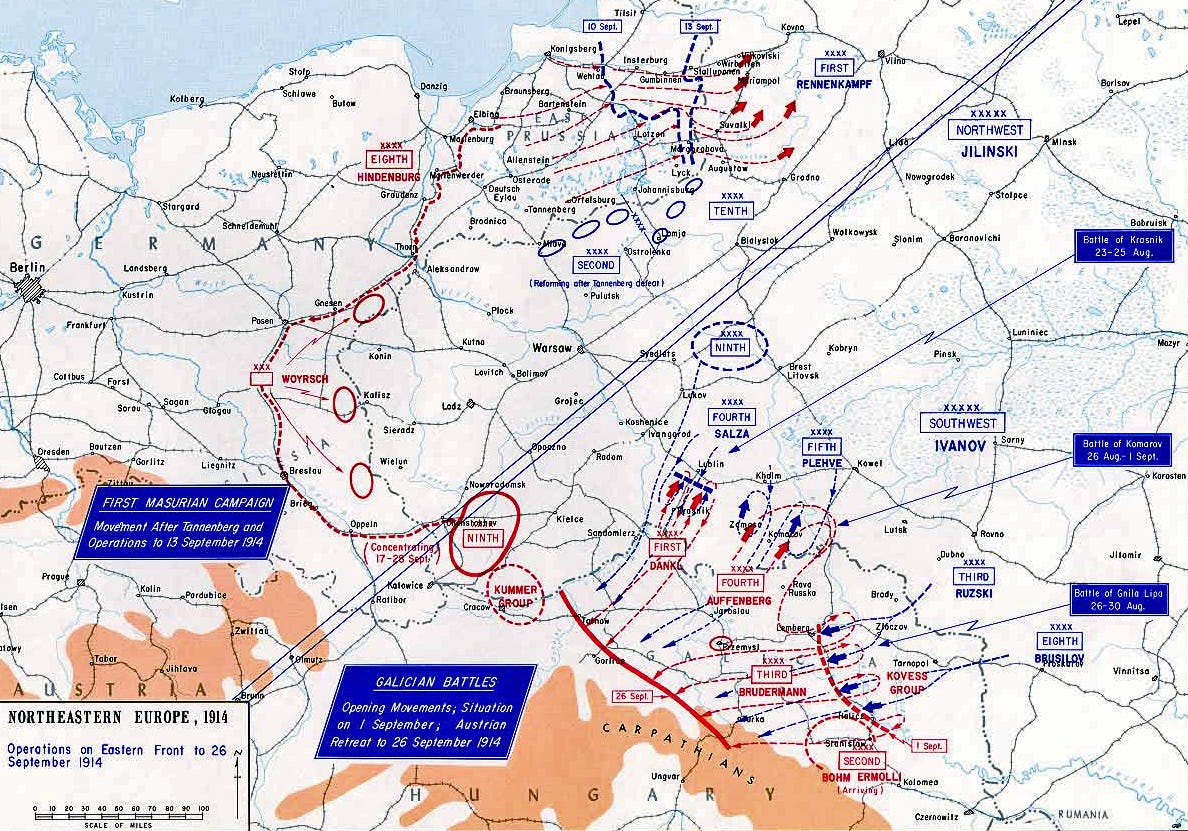
However, the implementation of the plan entirely depended on the actions of the Rennenkampf army, whose rapid advance to the west, according to Ludendorff, would make the maneuver unthinkable.Īt this time, the command of the North-Western Russian Front discovered a rapid retreat of German troops. It was decided to deploy 2.5 divisions against the 1st Russian army along the railway through Koenigsberg, and to transfer the main forces of the 8th Army against the 2nd Russian army of Samsonov and try to defeat it before it merged with units of the First Army. They arrived at the headquarters of the 8th Army on August 23,and approved a plan to repel the Russian offensive against East Prussia. On August 21, Moltke removed Prittwitz and his chief of staff, General Waldersee, and appointed Field Marshal Paul von Hindenburg and General Erich von Ludendorff in their place.

However, this decision was opposed and, contrary to the plan of Schlieffen, who, due to the unfavorable development of events on the Eastern Front, demanded a retreat to the heartland of Germany but in no case withdraw troops from the Western Front, in order to assure the defeat France and avoid a war on two fronts. The defeat at Gumbinnen created a real threat of encirclement of the Eighth German Army, and on the evening of August 20, Prittwitz decided to retreat. As a result, Prittwitz, fearful of encirclement, decided to retreat and abandon the entire territory of East Prussia. In the flank and rear, was the 2nd army of Samsonov. The 8th German Army, commanded by Colonel-General Prittwitz, was defeated on August 20, in a battle near Gumbinen. The 1st Army under the command of General PK Rennenkampf, and the 2nd Army, under the command of General AV Samsonov. The Russian offensive was carried out by the forces of two armies. However, the Russian army unexpectedly mobilized quickly and created an offensive on the Eastern Front, thus putting Germany in a bad position. It was assumed that during this time the German army would be able to inflict heavy casualties in France and capture Paris, and then attack Russia. The Schlieffen plan, which was the basis of the German strategy to win in the First World War, was created from the assumption that the Russian army would delay deployment for necessary mobilization.

The Battle of Tannenberg, August 26-30, 1914 was between Russian and German troops during the East Prussian operation in the First World War.


 0 kommentar(er)
0 kommentar(er)
